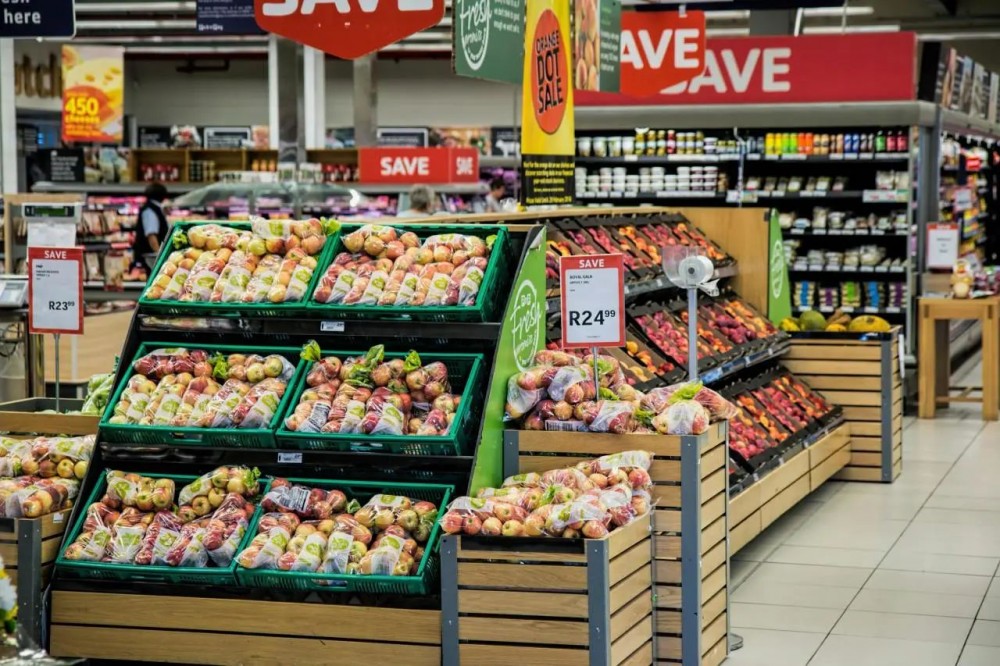Smart Retail Boom: Top 4 Chips Leading the Industry
Introduction to Smart Retail
Smart Retail leverages cutting-edge technologies such as Artificial Intelligence (AI), Big Data, Internet of Things (IoT), Cloud Computing, 5G, Blockchain, and AR/VR to deeply integrate the retail industry's core elements: consumers, products, and shopping environments. This transformation shifts the focus from "product-centric" to "consumer experience-centric" models. Through digitalization and intelligent solutions, Smart Retail optimizes supply chain management, store operations, marketing strategies, and customer service, significantly improving efficiency, reducing costs, and delivering personalized, convenient shopping experiences.

01. Market Overview
In 2025, the global Smart Retail market is projected to exceed $1.2 trillion, with an annual growth rate of approximately 15%. The Asia-Pacific region, led by China, accounts for over 40% of the global market. China's Smart Retail market is expected to reach RMB 850 billion, representing 35% of the global share, with a leading annual growth rate of 20%.
China's market shows distinct regional and consumption differences:
Tier 1 and 2 cities focus on premium experiences, such as AR/VR shopping and unmanned stores. In 2024, Shanghai saw a 50% year-on-year increase in unmanned retail stores.
Tier 3, 4, and county-level markets emphasize instant delivery and community group buying, with a 35% order growth in county-level instant retail in 2024.
In terms of technology adoption, Chinese retail enterprises lead globally, with 70% having deployed AI, IoT, or cloud computing technologies in 2024, compared to the global average of 45%.
Instant retail is a key driver, with 48 billion instant delivery orders in 2024, primarily driven by platforms like Meituan, Ele.me, and JD Daojia, accounting for 60% of the global instant retail market.

Key Players and Competitive Landscape
Platform Companies: Alibaba (Hema Fresh, Taoxian Da), JD (JD Daojia), and Meituan (Meituan Flash Purchase) continue to drive new retail and instant retail development.
Traditional Retail: Yonghui Superstores, Suning, and Watsons enhance operational efficiency and conversion rates through integrated store-warehouse models, AI inspections, and personalized promotions.
Technology Providers: Alibaba Cloud and Huawei Cloud offer Smart Retail solutions, while Hikvision covers 50% of large-scale supermarkets in China, providing intelligent monitoring and customer flow analytics.

02. Recommended Chips
Smart Retail terminals demand low power consumption, robust wireless communication, and high stability. The following four BLE chips are the market's top choices:
OM6626: A domestic BLE 5.0 SoC, ideal for smart bands, sensors, smart homes, and Find My applications.
PHY6222: A cost-effective domestic BLE solution, suitable for toys, lighting control, wearables, and other mass-market consumer products.
nRF52832: A high-performance BLE chip (Cortex-M4F) with a robust ecosystem, widely used in smartwatches, medical devices, and IoT applications.
nRF52810: An entry-level BLE chip with low cost and excellent power efficiency, ideal for Beacons, sensors, and lightweight devices.
03. Future Trends
Smart Retail is experiencing explosive global growth, with 2025 trends focusing on technology-driven innovation, market expansion, and evolving consumer behavior.
Deepening Omni-Channel Integration (OMO): Enterprises are using data platforms to integrate online e-commerce, apps, offline stores, and third-party platforms, enabling inventory sharing and precise marketing. By 2025, China's omni-channel retail is expected to account for 60% of total retail, with a 25% year-on-year increase in integrated online-offline orders. Hema Fresh, for example, boasts a 65% member repurchase rate, with over 50% of orders placed online.
Instant Retail and 24-Hour Fulfillment as the Norm: 30-minute to 1-hour delivery now spans supermarkets,餐饮, pharmaceuticals, and apparel. China's instant retail market reached RMB 700 billion in 2024 and is projected to grow to RMB 850 billion in 2025, with 48 billion orders (22% growth). Unmanned delivery technologies from Meituan Flash Purchase and JD Logistics have reduced nighttime fulfillment costs by approximately 60%.
Personalized Experiences and Enhanced Interactions: AI recommendation systems, AR/VR, and digital twin technologies enhance consumer immersion. The global AR retail market is expected to reach $20 billion by 2025, with AI recommendations boosting conversion rates by 30%-50%.
Rise of the Silver Economy and County-Level Markets: Demand for community group buying, age-friendly products, and instant delivery is surging. In 2024, instant retail orders from consumers aged 60+ grew by 78%, and county-level markets accounted for over 30% of the market. Pinduoduo's community group buying covers over 2,000 counties, with a 40% year-on-year order increase.
Green Retail and Sustainability: Globally, 50% of retail enterprises are expected to adopt recyclable packaging. China's green retail market reached RMB 50 billion, with JD Logistics reducing carbon emissions by approximately 2 million tons through optimized delivery.
AI and Blockchain for Transparent Supply Chains: Blockchain enhances supply chain traceability, while AI improves inventory forecasting and dynamic pricing. Globally, 30% of retail enterprises use blockchain, improving inventory turnover by 25%. Walmart China's fresh supply chain traceability time has been reduced from 7 days to 2 seconds.
Conclusion
In the new wave of Smart Retail, hardware chips are the cornerstone of the ecosystem. From unmanned retail terminals and smart POS systems to intelligent shelves, Beacons, and wearables, low-power, high-stability wireless communication chips are essential.
Our company supplies mainstream BLE chips, including OM6626, PHY6222, nRF52832, and nRF52810, and offers tailored selection advice, reference design solutions, and driver porting support for various applications (e.g., instant retail terminals, smart homes, wearables, and logistics tracking). This helps clients significantly reduce R&D cycles and costs.
Our experienced technical team can assist with RF debugging, power optimization, and protocol stack adaptation, ensuring optimal performance in stability, power consumption, and communication range.
If you're looking to enter the Smart Retail or IoT space, feel free to contact us for collaboration.




.png)

.png)












